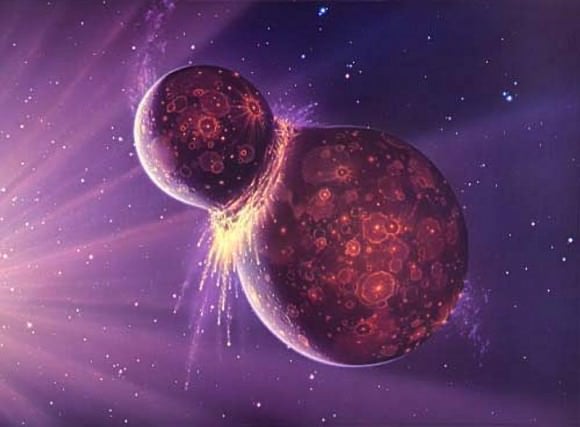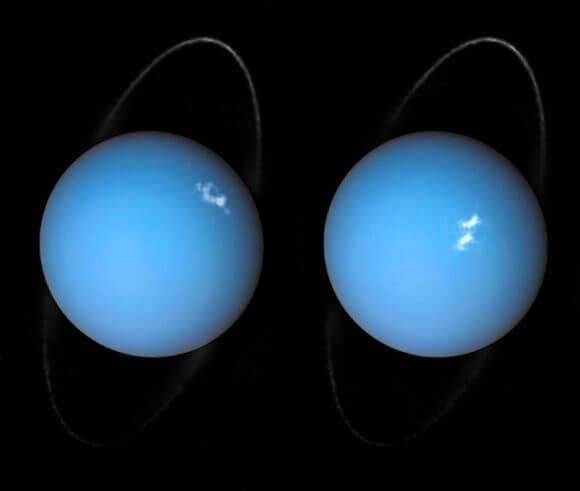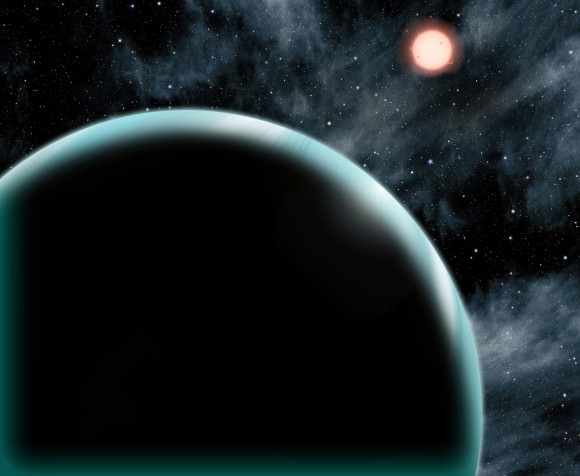The gas/ice giant Uranus has long been a source of mystery to astronomers. In addition to presenting some thermal anomalies and a magnetic field that is off-center, the planet is also unique in that it is the only one in the Solar System to rotate on its side. With an axial tilt of 98°, the planet experiences radical seasons and a day-night cycle at the poles where a single day and night last 42 years each.
Thanks to a new study led by researchers from Durham University, the reason for these mysteries may finally have been found. With the help of NASA researchers and multiple scientific organizations, the team conducted simulations that indicated how Uranus may have suffered a massive impact in its past. Not only would this account for the planet's extreme tilt and magnetic field, it would also explain why the planet's outer atmosphere is so cold.
The study, " Consequences of Giant Impacts on Early Uranus for Rotation, Internal Structure, Debris, and Atmospheric Erosion ", recently appeared in The Astrophysical Journal. The study was led by Jacob Kegerreis, a PhD researcher from Durham University's Institute for Computational Cosmology, and included members from the Bay Area Environmental Research (BAER) Institute, NASA's Ames Research Center, the Los Alamos National Laboratory, Descartes Labs, the University of Washington and UC Santa Cruz.
For the sake of their study, which was funded by the Science and Technology Facilities Council, The Royal Society, NASA and the Los Alamos National Laboratory, the team ran the first high-resolution computer simulations of how massive collisions with Uranus would affect the planet's evolution. As Kegerries explained in a recent Durham University press release:
“Uranus spins on its side, with its axis pointing almost at right angles to those of all the other planets in the solar system. This was almost certainly caused by a giant impact, but we know very little about how this actually happened and how else such a violent event affected the planet."
To determine how a giant impact would affect Uranus, the team conducted a suite of smoothed particle hydrodynamics (SPH) simulations, which were also used in the past to model the giant impact that led to the formation of the Moon (aka. the Giant Impact Theory). All told, the team ran more than 50 different impact scenarios using a high-powered computer to see if it would recreate the conditions that shaped Uranus.
In the end, the simulations confirmed that Uranus' tilted position was caused by a collision with a massive object (between two and three Earth masses) that took place roughly 4 billion years ago - i.e. during the formation of the Solar System. This was consistent with a previous study that indicated that an impact with a young proto-planet made of rock and ice could have been responsible for Uranus' axial tilt.
"Our findings confirm that the most likely outcome was that the young Uranus was involved in a cataclysmic collision with an object twice the mass of Earth, if not larger, knocking it on to its side and setting in process the events that helped create the planet we see today," said Kegerries.
In addition, the simulations answered a fundamental questions about Uranus that was raised in response to previous studies. Essentially, scientists have wondered how Uranus could retain its atmosphere after a violent collision, which would have theoretically blown off its out layers of hydrogen and helium gas. According to the team's simulations, this was most likely because the impact struck a grazing a blow on Uranus.
This would have been enough to alter Uranus' tilt, but was not strong enough to remove its outer atmosphere. In addition, their simulations indicated that the impact could have jettisoned rock and ice into orbit around the planet. This could then have coalesced to form the planet's inner satellites and altered the rotation of any pre-existing moons already in orbit around Uranus.
Last, but not least, the simulations offered a possible explanation for how Uranus got its off-center magnetic field and its thermal anomalies. In short, the impact could have created molten ice and lopsided lumps of rock inside the planet (thus accounting for its magnetic field). It could have also created a thin shell of debris near the edge of the planet's ice layer which would have trapped internal heat, which could explain why Uranus' outer atmosphere experiences extremely cold temperatures of -216 °C (-357 °F).
Beyond helping astronomers to understand Uranus, one of the least-understood planets in the Solar System, the study also has implications when it comes to the study of exoplanets. So far, most of the planets discovered in other star systems have been comparable in size and mass to Uranus. As such, the researchers hope their findings will shed light on these planet's chemical compositions and explain how they evolved.
As Dr. Luis Teodoro - of the BAER Institute and NASA Ames Research Center - and one of the co-authors on the paper, said, "All the evidence points to giant impacts being frequent during planet formation, and with this kind of research we are now gaining more insight into their effect on potentially habitable exoplanets."
In the coming years, additional missions are planned to study the outer Solar System and the giant planets. These studies will not only help astronomers understand how our Solar System evolved, they could also tell us what role gas giants play when it comes to habitability.
*Further Reading: Durham University, The Astrophysical Journal*
 Universe Today
Universe Today



